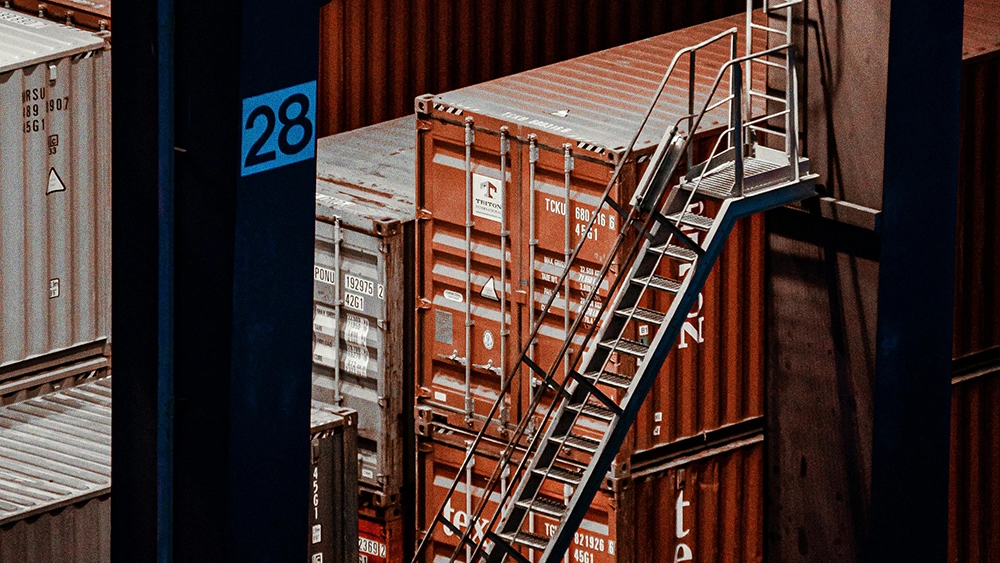Manufacturing and Logistics
U.S. tariffs shake logistics, but human connections offer a lifeline for 3PLs
Glide News DeskMonday May 5, 2025

The logistics sector faces uncertainty in 2025 due to slowing demand and new U.S. tariff policies, impacting 3PL providers.
Shimmi Munson of Strategic Transport Inc. sees potential growth in domestic opportunities as supply chains shift stateside.
Munson emphasizes the importance of nurturing relationships with brokers, carriers, and shippers to navigate market challenges.
I can see where AI would be a very good assistive tool in the future, but I don't see how within what we do, you can remove the human element completely.

Shimmi Munson
Business Development/Broker, Strategic Transport Inc.
The logistics landscape in mid-2025 is marked by significant uncertainty, driven by slowing customer demand and the disruptive impact of new U.S. tariff policies. Amidst this volatility, third-party logistics (3PL) providers are navigating murky waters, and finding it difficult to make confident predictions.
For Shimmi Munson, Business Development/Broker at Strategic Transport Inc., a family-owned 3PL specializing in LTL and FTL freight, the current climate underscores the enduring value of human connection and strategic adaptation over purely automated solutions. She sees cautious optimism for the latter half of the year, despite immediate headwinds.
Forcing necessity: While acknowledging the current market "sucks," Munson anticipates an eventual upswing driven by fundamental shifts. "All the way around, with the new administration's changes, it's going to have to force things into getting better out of necessity," says Munson, who anticipates a market turnaround by the third quarter, based on observations within her own customer base.
Varying perceptions: "Every 3PL is in different spaces, different markets, and so we all see different things because we're basing it off of what we see with our own customers," Munson explains, highlighting why generalizations are difficult. The immediate outlook suggests conditions might worsen before improving, once tariff issues gain clarity, but significant unknowns make preparation difficult for businesses. "There're just so many unknowns. It's really hard for anybody to really predict right now."
Stateside shift: Part of the optimism about a turnaround stems from anticipated growth in domestic opportunities, potentially spurred by administrative changes and shifting supply chains. "Having more products stateside, and with how things are going to be changing under this administration, I think that's going to bring us some new opportunities, domestically," Munson says.
She provides an example where raw materials for manufacturers, previously sourced overseas, are increasingly being sourced domestically, such as from the Wisconsin area. "I think that the customers that we have are going to see an increase in utilizing domestic resources, which is going to give us more business."
Having more products stateside, and with how things are going to be changing under this administration, I think that's going to bring us some new opportunities, domestically.

Shimmi Munson
Business Development/Broker, Strategic Transport Inc.
Nurturing connections: In this uncertain environment, Munson stresses the critical importance of strong partnerships. "You should make sure you're nurturing the relationships with your brokers, your carriers, your shippers, and your vendors," she advises. Brokers are actively adapting, sometimes dropping rates where possible and getting "crafty" to ensure carriers get freight and stay afloat, fostering a collaborative environment where carriers also show flexibility on pricing to ensure fairness and mutual survival through the downturn.
Beyond transactions: "Focusing on the relationships with those people – it truly is the most important part. Because if you're one of those shippers who's going to anybody and everybody, then those people aren't going to be loyal to you either," Munson emphasizes. Beyond the transactional nature of business, there's an inherent emotional component in logistics partnerships; customers can become friends, and carriers can feel like family, leading to a level of care that transcends purely data-driven decisions.
Strategic limits: Munson believes this human element contrasts sharply with the current capabilities of AI in logistics. Current AI operates primarily on defined, numbers-driven parameters and lacks the strategic intent or nuanced understanding a human broker brings, she says, meaning its outputs may not always represent the genuinely best solution for a customer's specific needs.
"Having the human element is still allowing us to go in and make sure that every situation is handled appropriately and that we're making the decisions that are best for the customer," Munson says.
SME considerations: The value proposition of automated versus human-led logistics solutions differs significantly between large enterprises, which may prioritize scale and efficiency, and small-to-mid-sized companies where "literally every dollar does actually count," making personalized, risk-mitigating strategies crucial. "I can see where AI would be a very good assistive tool in the future, but I don't see how within what we do, you can remove the human element completely.